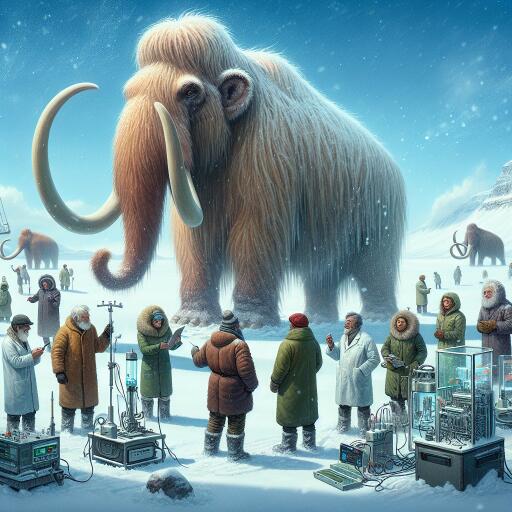
Woolly Mammoth Comeback? Science Might Revive Extinct Species by 2028
The frontier of genetic science is witnessing a remarkable evolution that brings the notion of resurrecting extinct species, like the woolly mammoth, closer to reality. This ambitious endeavor merges fascination with profound ethical, ecological, and technological questions. The journey to de-extinction, a term that signifies the revival of extinct species, entered the realm of possibility when scientists cloned a Pyrenean ibex in 2003, albeit for a short-lived success due to a defect. This milestone underscored the potential and set the stage for future endeavors aimed at reviving species lost to time.
At the forefront of these scientific advances is Colossal Biosciences, a visionary company with the ambitious goal of breathing life back into creatures like the woolly mammoth, the dodo, and the Tasmanian tiger. Through innovative techniques, Colossal Biosciences plans to splice extinct species’ DNA with their modern-day relatives, aiming to reproduce the key characteristics that defined these ancient animals.
According to Ben Lamm, co-founder and CEO of Colossal Biosciences, the prospect of birthing a mammoth-like calf by 2028 is within reach. This involves integrating mammoth-specific genes, responsible for features such as dense fur and formidable tusks, with the DNA of the Asian elephant, setting the stage for the birth of a hybrid mammoth. The company envisions using surrogates or even artificial wombs for gestation.
The ambition behind such de-extinction efforts transcends the mere recreation of extinct species. Scientists are driven by a desire to reinstall lost ecological roles these creatures once played. Woolly mammoths, for example, were integral to the preservation of Arctic grasslands. Their reintroduction could potentially rebalance these ecosystems, offering a novel approach to carbon storage and climate change mitigation.
However, the path to de-extinction is fraught with challenges. Skeptics highlight the unpredictable nature of reintroducing species to environments that have evolved in their absence, warning of potential ecological imbalance. Ethical questions also surround the use of endangered animals like the Asian elephant as surrogate mothers, which could imperil their already vulnerable populations.
The discourse on de-extinction extends into broader ethical and ecological considerations. The enthusiasm for resurrecting extinct species prompts a reflection on human influence and the responsibility that comes with wielding such transformative technologies. Critics caution against diverting attention and resources from conservation efforts aimed at species currently facing extinction, arguing that the fight to save living species should take precedence.
Despite the allure of witnessing extinct species roam the earth once more, the initiative is enshrouded with uncertainties that demand careful contemplation. The endeavors of Colossal Biosciences and their ilk represent a significant leap towards understanding and potentially rectifying past ecological losses, but at what cost remains a subject of ongoing debate.
As we stand on the brink of making history by reviving the woolly mammoth, the broader implications of such scientific breakthroughs continue to stir discussion. Whether these efforts will enrich biodiversity and ecosystem resilience or usher in unforeseen challenges is a narrative that is still being written.





Leave a Reply